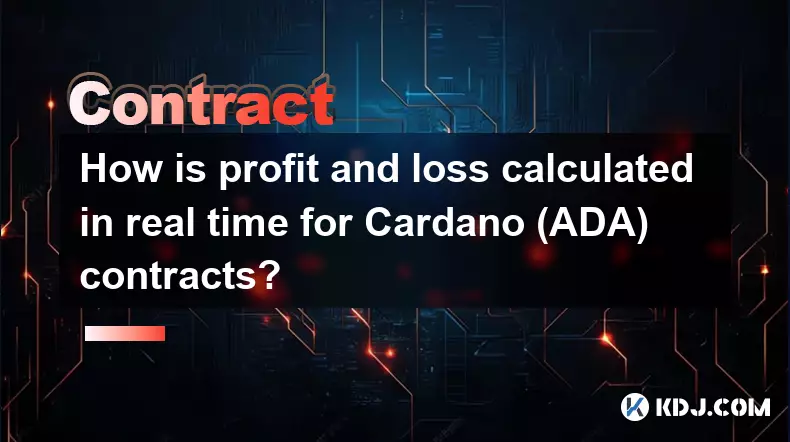-
 bitcoin
bitcoin $109667.069529 USD
-3.03% -
 ethereum
ethereum $3936.685804 USD
-4.07% -
 tether
tether $1.000493 USD
0.01% -
 xrp
xrp $2.771823 USD
-4.74% -
 bnb
bnb $957.805027 USD
-5.34% -
 solana
solana $196.735100 USD
-6.68% -
 usd-coin
usd-coin $0.999727 USD
-0.01% -
 dogecoin
dogecoin $0.227355 USD
-5.12% -
 tron
tron $0.335205 USD
-0.81% -
 cardano
cardano $0.779256 USD
-3.59% -
 ethena-usde
ethena-usde $0.999900 USD
-0.06% -
 hyperliquid
hyperliquid $42.492095 USD
-6.61% -
 chainlink
chainlink $20.501853 USD
-4.34% -
 avalanche
avalanche $28.952606 USD
-11.21% -
 stellar
stellar $0.356038 USD
-3.93%
Under what circumstances will the currency-margined perpetual contract liquidate?
Liquidation occurs when a trader's losses exceed their deposited margin, typically caused by adverse price movements, insufficient margin, or rule violations on the exchange.
Nov 19, 2024 at 11:30 pm

Perpetual contracts are a type of derivative that allows traders to speculate on the future price of an asset without taking ownership of the underlying asset. They are similar to futures contracts, but there is no set expiration date for perpetual contracts. This means that traders can hold positions for as long as they want, or until they decide to close them out.
Perpetual contracts are typically traded with leverage, which means that traders can borrow money from the exchange to increase their potential profits. However, this also increases the risk of loss, as traders can lose more money than they originally invested.
One of the most important things to understand about perpetual contracts is the concept of liquidation. Liquidation occurs when a trader's losses exceed the amount of margin they have deposited with the exchange. When this happens, the exchange will automatically close out the trader's position and sell the underlying asset to cover the losses.
There are a few different circumstances that can lead to liquidation. The most common circumstance is when the price of the underlying asset moves against the trader's position. For example, if a trader is long a perpetual contract on Bitcoin and the price of Bitcoin falls, the trader will start to lose money. If the price falls far enough, the trader's losses will exceed the amount of margin they have deposited with the exchange, and they will be liquidated.
Another circumstance that can lead to liquidation is when the trader's margin is too low. Margin is the amount of money that a trader has deposited with the exchange to cover potential losses. If a trader's margin is too low, the exchange may liquidate their position even if the price of the underlying asset has not moved against them.
Finally, liquidation can also occur if the trader violates any of the exchange's rules. For example, if a trader trades with excessive leverage or if they fail to meet a margin call, the exchange may liquidate their position.
Liquidation is a serious risk for traders who trade perpetual contracts. It is important to understand the circumstances that can lead to liquidation and to take steps to minimize the risk of being liquidated.
Steps to Minimize the Risk of Liquidation
There are a few steps that traders can take to minimize the risk of liquidation:
- Use a stop-loss order. A stop-loss order is an order to sell a perpetual contract when the price of the underlying asset reaches a certain level. This can help to limit the trader's losses if the price of the asset moves against them.
- Maintain a sufficient margin balance. Traders should always maintain a sufficient margin balance to cover potential losses. The amount of margin required will vary depending on the exchange and the type of perpetual contract being traded.
- Avoid trading with excessive leverage. Leverage can increase the trader's potential profits, but it also increases the risk of loss. Traders should only use leverage that they are comfortable with and that they can afford to lose.
- Be aware of the exchange's rules. Traders should always be aware of the exchange's rules regarding liquidation. This includes the minimum margin requirement, the circumstances that can lead to liquidation, and the procedures for liquidating a position.
By following these steps, traders can minimize the risk of liquidation and protect their profits.
Disclaimer:info@kdj.com
The information provided is not trading advice. kdj.com does not assume any responsibility for any investments made based on the information provided in this article. Cryptocurrencies are highly volatile and it is highly recommended that you invest with caution after thorough research!
If you believe that the content used on this website infringes your copyright, please contact us immediately (info@kdj.com) and we will delete it promptly.
- XRP Price, Cardano, and Layer Brett: Which Crypto Will Dominate?
- 2025-09-27 00:25:16
- Bitcoin ETF Bonanza: BlackRock, MicroStrategy, and the $86 Billion Revolution
- 2025-09-27 00:25:16
- Meme Coins, Trending Projects, and Your Portfolio: What's Hot Now?
- 2025-09-27 00:30:02
- mXRP Mania: How the XRP Yield Token and Supply Cap Sparked DeFi Frenzy
- 2025-09-27 00:30:02
- Crypto Market Watch: Bitcoin's Exhaustion Signals and the Meme Coin Revolution
- 2025-09-27 00:30:02
- Navigating the Economic Seas: Interest Rate Cuts, US Inflation, and the Fed's Tightrope Walk
- 2025-09-27 00:30:14
Related knowledge

How do I enable the "scalping-only" mode for Cardano (ADA) contracts?
Sep 24,2025 at 03:19am
Understanding Scalping Strategies in Crypto Derivatives1. Scalping in cryptocurrency trading refers to executing multiple short-term trades within min...

What is the maximum position limit for Cardano (ADA) contracts?
Sep 23,2025 at 11:00pm
Understanding ADA Futures and Derivatives Market Structure1. Cardano (ADA) futures contracts are offered by several major cryptocurrency derivatives e...

What is the maker fee for Cardano (ADA) contracts?
Sep 26,2025 at 09:01am
Understanding Maker Fees in Cardano (ADA) Contracts1. The concept of maker fees applies broadly across decentralized exchanges and smart contract plat...

How can I view open interest in Cardano (ADA) contracts?
Sep 24,2025 at 07:36am
Understanding Open Interest in Cardano Derivatives1. Open interest refers to the total number of outstanding derivative contracts, such as futures or ...

What is the function of the insurance fund in Cardano (ADA) contracts?
Sep 24,2025 at 02:18am
Understanding the Role of Insurance Funds in Cardano Smart Contracts1. The insurance fund within Cardano's ecosystem is not a native feature directly ...

How is profit and loss calculated in real time for Cardano (ADA) contracts?
Sep 26,2025 at 04:18pm
Understanding Real-Time Profit and Loss in Cardano (ADA) Contracts1. Real-time profit and loss (P&L) calculations for Cardano-based smart contracts re...

How do I enable the "scalping-only" mode for Cardano (ADA) contracts?
Sep 24,2025 at 03:19am
Understanding Scalping Strategies in Crypto Derivatives1. Scalping in cryptocurrency trading refers to executing multiple short-term trades within min...

What is the maximum position limit for Cardano (ADA) contracts?
Sep 23,2025 at 11:00pm
Understanding ADA Futures and Derivatives Market Structure1. Cardano (ADA) futures contracts are offered by several major cryptocurrency derivatives e...

What is the maker fee for Cardano (ADA) contracts?
Sep 26,2025 at 09:01am
Understanding Maker Fees in Cardano (ADA) Contracts1. The concept of maker fees applies broadly across decentralized exchanges and smart contract plat...

How can I view open interest in Cardano (ADA) contracts?
Sep 24,2025 at 07:36am
Understanding Open Interest in Cardano Derivatives1. Open interest refers to the total number of outstanding derivative contracts, such as futures or ...

What is the function of the insurance fund in Cardano (ADA) contracts?
Sep 24,2025 at 02:18am
Understanding the Role of Insurance Funds in Cardano Smart Contracts1. The insurance fund within Cardano's ecosystem is not a native feature directly ...

How is profit and loss calculated in real time for Cardano (ADA) contracts?
Sep 26,2025 at 04:18pm
Understanding Real-Time Profit and Loss in Cardano (ADA) Contracts1. Real-time profit and loss (P&L) calculations for Cardano-based smart contracts re...
See all articles










































































